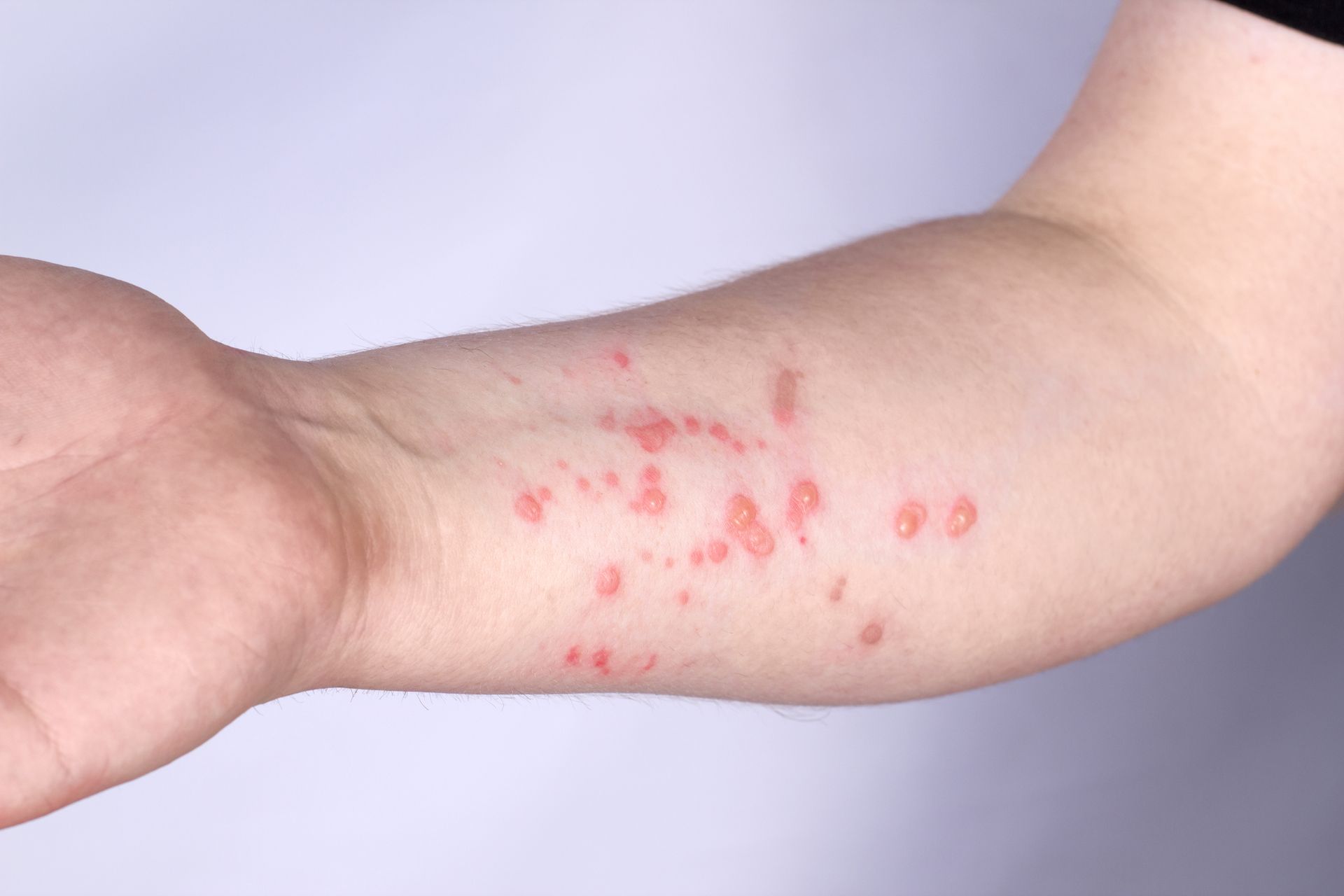Monkeypox is a rare viral infection that is similar to smallpox. The monkeypox virus is found in several African countries and can infect both humans and animals. The disease is most commonly spread to humans from infected animals, but can also be spread through human-to-human contact.
Monkeypox is characterized by a rash that starts off as small red bumps and eventually turns into large blisters. The rash typically starts on the face and then spreads to the rest of the body. Other symptoms of monkeypox include fever, headache, muscle aches, and fatigue.
The monkeypox virus is usually not fatal, but can be deadly in some cases. There is no specific treatment for monkeypox and no vaccine is available to prevent the disease.
If you think you may have monkeypox pictures, it is important to seek medical attention immediately. Early diagnosis and treatment is critical to preventing serious complications.
The different stages of monkeypox
Monkeypox is a rare viral disease that is similar to smallpox. It is found primarily in Africa, where it is considered a reemerging disease. The first recorded outbreak occurred in the Democratic Republic of the Congo in 1970.
The monkeypox virus is classified as a zoonotic pathogen, meaning it can be transmitted from animals to humans. The primary host of the monkeypox virus is believed to be the African squirrel. The virus is thought to be transmitted to humans through contact with the infected animal’s blood or body fluids, or through contact with contaminated objects such as bedding or clothing.
Once a human is infected with monkeypox, the virus begins to replicate in the lymph nodes and skin. The incubation period, or the time from exposure to the development of symptoms, is typically between 10 and 21 days.
The first stage of monkeypox is characterized by the development of a fever, headache, muscle aches, and backache. These symptoms are followed by the appearance of a rash, which begins on the face and spreads to the trunk and extremities. The rash starts as small red bumps that turn into fluid-filled vesicles. The vesicles eventually rupture and form crusts.
The second stage of monkeypox pictures is marked by the development of more severe symptoms, including pneumonia, encephalitis, and death. The mortality rate for monkeypox is estimated to be between 1 and 10%.
There is no specific treatment for monkeypox. Treatment is supportive and focuses on relieving symptoms and preventing complications. There is no vaccine available for monkeypox.
The best way to prevent monkeypox is to avoid contact with infected animals and to avoid contact with people who are sick with the disease.
How Monkeypox Pctures is spread
Monkeypox pictures is a zoonotic viral disease that occurs primarily in Central and West Africa. The monkeypox virus is closely related to the variola virus, the causative agent of smallpox. Human monkeypox was first recognized in 1970 in the Democratic Republic of Congo. The majority of human monkeypox cases occur in remote, rural areas of the Congo Basin and Central African Republic, where there is close contact with infected animals.
The monkeypox virus is transmitted to humans from various wild animals, including primates, squirrels, and rodents. Human-to-human transmission can also occur, and the monkeypox virus can spread through close contact with an infected person, such as through coughing and sneezing, or contact with infected body fluids or contaminated objects.
Monkeypox is a relatively rare disease, with only a few hundred cases reported each year. The majority of cases occur in children under the age of 15. The symptoms of monkeypox are similar to those of smallpox, and include fever, fatigue, muscle aches, and a rash that typically starts on the face and spreads to the rest of the body. Monkeypox can be fatal in up to 10% of cases, and there is no specific treatment or vaccine available.
The best way to prevent monkeypox is to avoid contact with wild animals, and to avoid close contact with people who are sick with the disease. If you live in or travel to an area where monkeypox is endemic, make sure to wash your hands often and avoid touching your face. If you develop a fever or rash, see a doctor immediately.
Treatment for monkeypox
Monkeypox is a serious viral illness that occurs primarily in Africa. The monkeypox virus is similar to the variola virus, which is the cause of smallpox. Monkeypox is usually spread to humans from infected animals, but can also be spread from person to person. The illness usually lasts for 2-4 weeks, and can be fatal in some cases. There is no specific treatment for monkeypox, but there are some general measures that can be taken to help relieve symptoms and prevent complications.
The first step in treating monkeypox pictures is to identify the source of the infection. If the source is an animal, it is important to avoid contact with that animal and any others that may be infected. If the source is another person, it is important to avoid close contact with that person and any others who may be infected.
Once the source of the infection has been identified, the next step is to treat the symptoms. monkeypox pictures can cause a variety of symptoms, including fever, rash, and muscle aches. There is no specific treatment for these symptoms, but there are some general measures that can be taken to help relieve them. These measures include:
- – Taking over-the-counter pain medications such as acetaminophen or ibuprofen to help relieve fever, muscle aches, and pain
- – Taking over-the-counter antihistamines to help relieve itching
- – Applying cool compresses to the skin to help relieve itching and pain
- – Taking lukewarm baths with soothing agents such as oatmeal or baking soda to help relieve itching
In addition to treating the symptoms, it is also important to take measures to prevent complications. Some of the complications that can occur with monkeypox include pneumonia, encephalitis, and sepsis. To help prevent these complications, it is important to:
- – Drink plenty of fluids to stay hydrated
- – Get plenty of rest
- – Avoid close contact with others
- – Avoid scratching the rash
- – Keep the rash clean and dry
If you think you or someone you know has monkeypox, it is important to see a doctor right away. Monkeypox can be a serious illness, and early diagnosis and treatment is important
Prevention of monkeypox
Monkeypox is a rare viral infection that is similar to smallpox. It is found primarily in Central and West Africa. The monkeypox virus is spread through contact with the saliva, mucus, or skin of an infected animal, usually a monkey or a rat. It can also be spread through contact with the infected person’s respiratory secretions, such as saliva, mucus, or skin rash lesions.
The monkeypox virus can cause a severe illness in humans, with symptoms that include fever, muscle aches, headache, and a rash. The monkeypox rash starts as small red bumps and progresses to large, fluid-filled blisters. Monkeypox is a serious illness, but it is not as contagious or as deadly as smallpox. There is no specific treatment for monkeypox, but the disease usually goes away on its own within a few weeks.
There are a few things that you can do to help prevent monkeypox:
1. Avoid contact with infected animals. This includes monkeys, rats, and other animals that may be infected with the monkeypox virus. If you must handle these animals, wear gloves and other protective clothing.
2. Avoid contact with people who are infected with monkeypox. This includes staying away from people who have the monkeypox rash or who are sick with monkeypox.
3. Wash your hands often with soap and water. This will help to remove the monkeypox virus from your hands if you come into contact with it.
4. Get the smallpox vaccine. This vaccine will not protect you from monkeypox, but it will help to reduce your risk of getting sick if you are exposed to the virus.
5. Talk to your doctor if you think you have been exposed to monkeypox. If you have been in contact with someone who has monkeypox or have recently traveled to an area where monkeypox is common, call your doctor right away.

